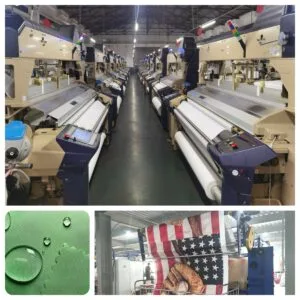
Microfiber fabric, a revolutionary textile material, has gained widespread popularity for its versatility, durability, and exceptional performance across various industries. Known for its ultra-fine fibers that are even smaller than a strand of silk, microfiber fabric offers a unique blend of properties that make it indispensable in both commercial and everyday applications. This article delves into the distinctive features and advantages of microfiber fabric, highlighting its impact on the textile industry and beyond.
Key Features of Microfiber Fabric
- Ultra-Fine Fibers Microfiber is defined by its incredibly fine fibers, which are typically less than one denier in diameter. These fibers are often composed of polyester, polyamide (nylon), or a blend of both, providing a smooth and dense structure.
- High Absorbency The microscopic fibers in microfiber-fabric create a vast surface area, allowing it to absorb liquids efficiently. This high absorbency makes it a preferred choice for cleaning, sportswear, and other moisture-wicking applications.
- Exceptional Softness Microfiber fabric is renowned for its silky and plush texture, offering superior comfort compared to many traditional textiles. This softness makes it a favorite in bedding, upholstery, and clothing.
- Durability and Longevity Despite its fine structure, microfiber-fabric is remarkably strong and resistant to wear and tear. Its resilience ensures long-lasting performance even with frequent use and washing.
- Lightweight and Breathable The lightweight nature of microfiber-fabric enhances its breathability, making it ideal for activewear and warm-weather garments. It provides comfort without compromising on performance.
- Stain Resistance Many microfiber-fabrics are treated to repel stains and liquids, adding an extra layer of convenience for household and commercial use.
- Eco-Friendly Options Advances in textile technology have led to the production of microfiber-fabrics made from recycled materials, appealing to environmentally conscious consumers.
Advantages of Microfiber Fabric
- Superior Cleaning Performance Microfiber-fabric is widely recognized for its effectiveness in cleaning. Its fine fibers can capture dust, dirt, and bacteria without the need for harsh chemicals, making it a safer and more eco-friendly choice for household and industrial cleaning.
- Enhanced Moisture Management The moisture-wicking properties of microfiber-fabric make it ideal for sportswear and activewear. It helps keep the wearer dry and comfortable, even during intense physical activity.
- Wide Range of Applications Microfiber-fabric’s versatility is unmatched. It is used in clothing, upholstery, cleaning products, automotive interiors, and more. Its adaptability ensures it meets the diverse needs of various industries.
- Allergen Reduction Due to its tightly woven structure, microfiber-fabric can block allergens like dust mites and pollen, making it a popular choice for bedding and upholstery in households with allergy sufferers.
- Cost-Effectiveness Although microfiber-fabric offers premium qualities, its affordability ensures it is accessible to a broad range of consumers. Its durability further enhances its cost-effectiveness by reducing the need for frequent replacements.
- Ease of Maintenance Microfiber-fabric is easy to care for, often requiring only mild detergent and minimal drying time. Its resistance to shrinking and fading ensures it maintains its appearance and functionality over time.
- Aesthetic Versatility Available in a wide array of colors, patterns, and finishes, microfiber fabric caters to diverse aesthetic preferences. Whether in fashion, home decor, or automotive design, it provides endless creative possibilities.
Innovations in Microfiber Fabric
Recent advancements have expanded the capabilities of microfiber fabric. Innovations such as nanotechnology-enhanced coatings and the integration of antimicrobial properties have further elevated its performance. These enhancements have opened new avenues in healthcare, hospitality, and high-tech industries.
Environmental Considerations
While microfiber fabric offers numerous benefits, concerns regarding microplastic pollution have arisen due to the shedding of fibers during washing. To mitigate this issue, manufacturers are developing more sustainable production methods and encouraging the use of washing machine filters to capture microfibers. Additionally, research into biodegradable microfiber options is underway, aiming to balance performance with environmental responsibility.
Conclusion
Microfiber fabric stands out as a remarkable textile innovation, combining functionality, comfort, and versatility. Its ultra-fine fibers provide a unique set of features, from high absorbency and softness to durability and stain resistance. With applications ranging from cleaning and clothing to upholstery and automotive interiors, microfiber fabric has revolutionized the way we interact with textiles. As technology and sustainability efforts continue to evolve, microfiber fabric is poised to remain a cornerstone of modern textiles, offering solutions that cater to both industry demands and consumer needs.

